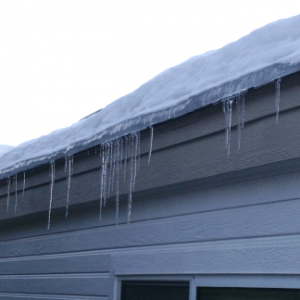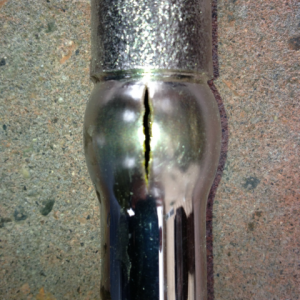 As winter cold weather sets in with our typical freezing rain for the Chelan Valley Area, you should consider taking a few precautionary steps to help ensure that winter weather stays outside your home. Freezing rain and snow on roofs can lead to interior water damage. Likewise, freezing pipes can burst and cause extensive water damage to interior contents and finishes. To help protect your home, review these weatherproofing tips from the IBHS (Insurance Institute of Business & Home Safety).
As winter cold weather sets in with our typical freezing rain for the Chelan Valley Area, you should consider taking a few precautionary steps to help ensure that winter weather stays outside your home. Freezing rain and snow on roofs can lead to interior water damage. Likewise, freezing pipes can burst and cause extensive water damage to interior contents and finishes. To help protect your home, review these weatherproofing tips from the IBHS (Insurance Institute of Business & Home Safety).
Eliminate Ice Dams
Ice dams are ridges of ice that form at the edge of a roof or around drains and prevent melting snow and water from draining off your roof. The water that backs up can leak under the shingles and then into the building and cause damage to walls, ceilings, insulation and other areas. To help prevent damage from ice dams, the Insurance Institute for Business & Home Safety (IBHS) recommends the following:
- Increase insulation above ceilings.

- Create a preventative maintenance plan that includes periodically inspecting the roof drainage system for proper flow, including drains, scuppers, gutters and downspouts.
- Install self-regulating heating cables on gutters and downspouts and around roof drains. Have someone monitor operation on a regular basis.
- Keep all drains, scuppers, gutters and downspouts free of debris and vegetation that may restrict proper flow.
- Prune trees with limbs that may hang over the roof to prevent an accumulation of tree leaves and branches that may clog or slow roof drainage.
- Improve ventilation. An option for improving roof ventilation is to install electric power vents with thermostats.
If you experience an ice dam, fill a sock or panty hose stocking with calcium chloride (salt) and place perpendicular to the frozen gutter, allowing the sock or stocking to hang over the gutter. Placing these every couple of feet on center will facilitate the drainage of water. This will create a channel in the dam to allow the water to flow off of the roof. Be careful if you attempt to remove the ice by chipping a channel into the dam. Damages to the shingles underneath the dam may result.
Prevent Freezing Pipes
 When the water in a pipe freezes, it can explode and cause significant damage to the interior of your home. Pipes that run along exterior walls and in attics and crawl spaces are the most vulnerable. To keep your pipes free of ice and freezing water, IBHS recommends the following:
When the water in a pipe freezes, it can explode and cause significant damage to the interior of your home. Pipes that run along exterior walls and in attics and crawl spaces are the most vulnerable. To keep your pipes free of ice and freezing water, IBHS recommends the following:
- Place insulation sleeves over exposed pipes to slow heat transfer.
- Seal cracks and holes in the outside walls and foundations near water pipes with caulking.
- Keep kitchen and bathroom cabinet doors open during cold spells to allow warm air to circulate around the pipes.
- Drain pipes if your house will be unattended or not monitored during cold periods, if this is not possible, then have someone come in periodically to inspect and monitor conditions and make sure that the water supply has been turned off at the main valve.
- Keep the house heated to a minimum of 65 degrees to prevent pipes from freezing. Consider providing a reliable back-up power source, such as a stand-by generator, to ensure continuous power.
- Recessed light fixtures in the ceiling below the open area directly under a roof, such as attic space, should be insulated to prevent the release of heat into the attic.
- Ensure proper seals are on doors and windows.
- Shut off the water to the exterior water bib on the inside, then drain the exterior faucet by opening the valve on the outside. If this is not possible, then protect all exterior faucets with insulated hose cover protectors.
If your pipes freeze, time is of the essence. Know how to shut off the water. The more quickly you can turn off the water or direct your plumber to the problem, the better chance you have to prevent pipes from bursting and causing extensive damage throughout your home.
Footnote: There are some vacant homes within the area with unprotected exterior faucets that have frozen. It is likely that there may be more. It is not clear exactly where back in the wall or floor area this condition has developed. When the weather does warm up those pipes will thaw and the damaged areas will most likely leak water. There are also considerable ice dams developing on many of the shingled roofs from the long cold spell and remaining snow coverage. Interior ceilings and walls should be carefully watched during rain and warming trends to determine if any water is seeping into interior cavities. If damage does occur, the IBHS recommends that you promptly notify your insurance carrier of any damage in order to protect your claim. You also need to take immediate steps to prevent further damage by removing the snow along the edges of the roof and creating drainage channels for the backed up water to flow out. Failure to do these steps could possibly result in denial of your claim.Fortunately, according to the Insurance Information Institute, most homeowner’s policies cover damage related to ice dams. Each homeowner, however, should verify with their agent the coverage provisions of their particular policy. Also, heading off ice dams can save you the trouble of filing an insurance claim (and possibly paying a deductible) and also help prevent the need to file premium-raising claims every winter.
If you need monitoring of your homes this winter to prevent or mitigate damage and to provide a documentation and reporting service for your insurance carrier in the event that something does happen, please contact us at Lake Chelan HomeWatch. We can help you by looking for early signs of damage; notify you or your insurance carrier if something has happened; implement steps to reduce further damage; meet with your insurance adjuster to assist in filing any claims and take pictures to document any damage for your records.

Recent Comments